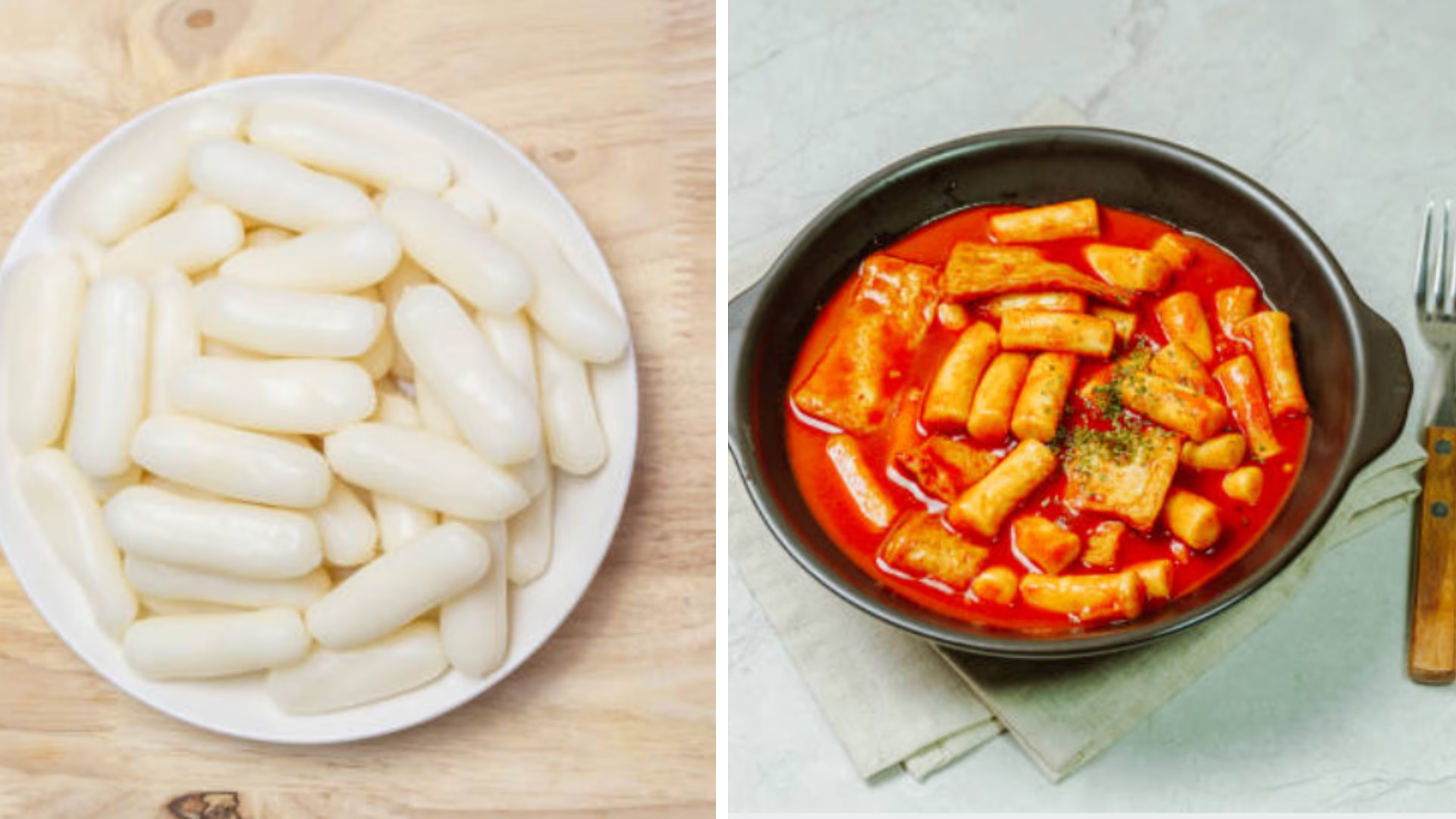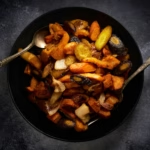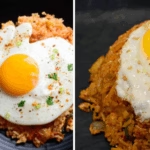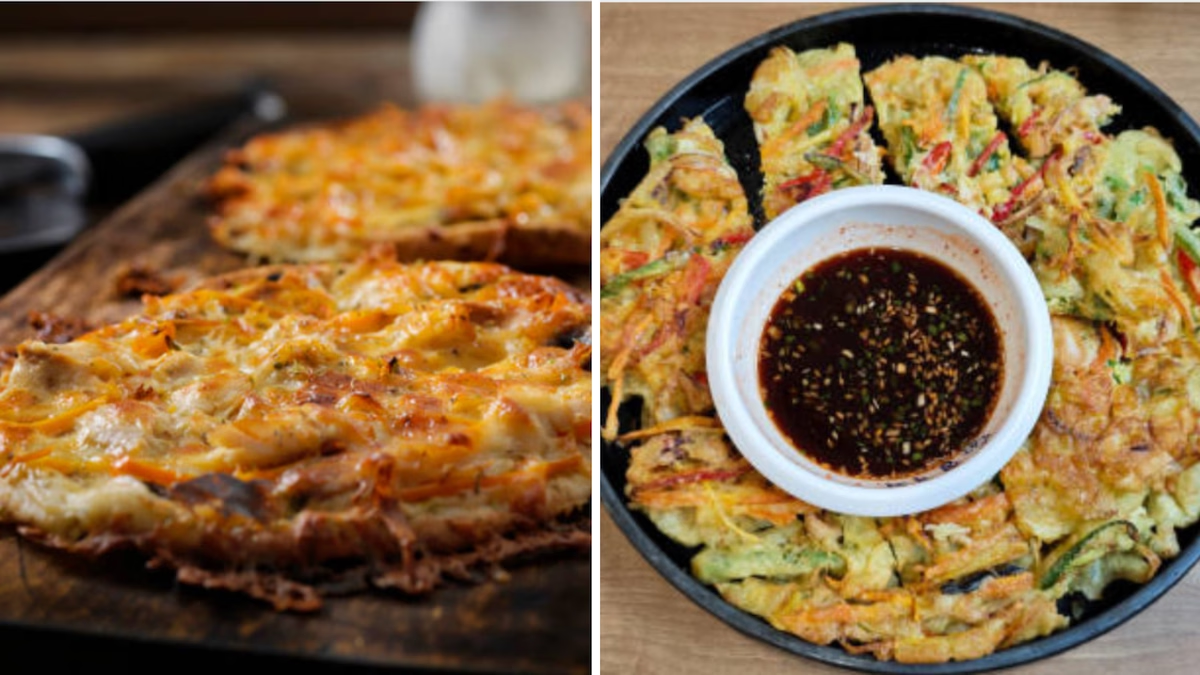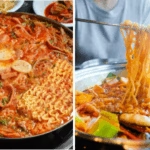If you’ve been scrolling through TikTok or Instagram lately, chances are you’ve come across the viral sensation known as rose tteokbokki. This Korean dish takes the traditional spicy rice cakes and gives them a creamy, blush-pink makeover, making it both delicious and Instagram-worthy.
In this blog post, we’ll dive deep into the world of rose tteokbokki, exploring its origins, the perfect tteokbokki sauce, and three exciting twists: cheesy, buldak-inspired spicy, and vegan. Whether you’re a seasoned cook or a newbie in the kitchen, this guide will help you recreate this trendy dish at home.
In this blog you’ll read:
What Makes Rose Tteokbokki Special?
Rose tteokbokki is a fusion dish that combines the spicy kick of traditional tteokbokki with the creamy richness of Western sauces. The result is a harmonious blend of flavors that’s both comforting and exciting. The name “rose” comes from the sauce’s pink hue, achieved by mixing gochujang (Korean chili paste) with cream or milk.
This dish stands out not just for its taste but also for its versatility. You can adjust the spice level, add various proteins or vegetables, and even make it vegan-friendly. Plus, its visually appealing presentation makes it a hit on social media platforms.
The Perfect Tteokbokki Sauce
The heart of any tteokbokki dish lies in its sauce. For rose tteokbokki, the sauce is a creamy, spicy concoction that balances heat with richness. Here’s how to make it:
Ingredients:
Core Ingredients (Serves 3-4)
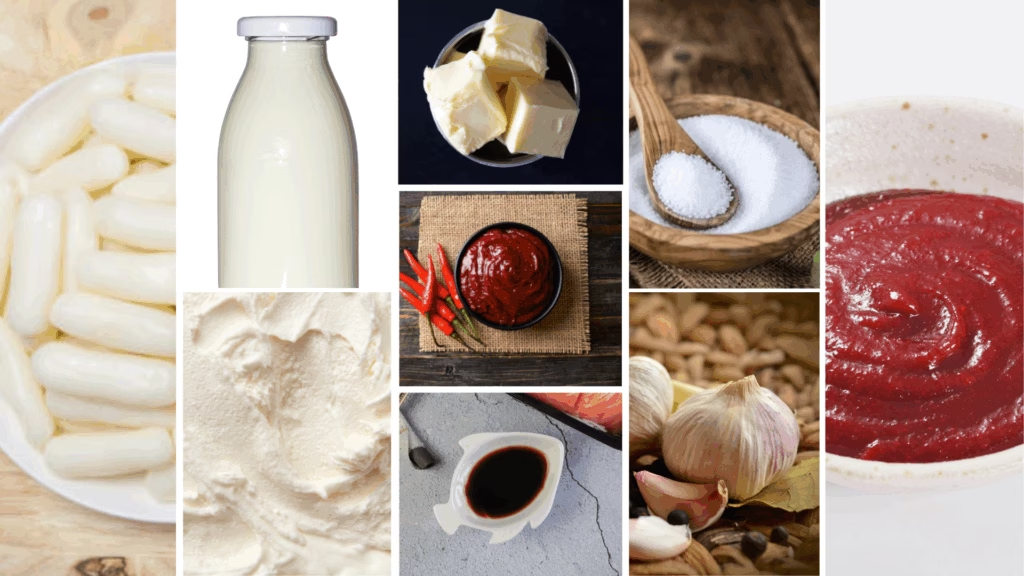
- Rice cakes (tteokbokki) – 350g; available in the frozen section of Asian supermarkets or online.
- Gochujang (Korean chili paste) – 3 tbsp; for a spicy kick.
- Heavy cream – 1 cup; substitute with coconut milk for a vegan option.
- Milk – ½ cup; oat or almond milk can be used for a lighter version.
- Garlic – 4 cloves, minced.
- Soy sauce – 1 tbsp; tamari can be used for a gluten-free alternative.
- Sugar – 1 tbsp; balances the heat.
- Tomato paste – 1 tbsp; adds depth to the sauce.
- Butter – 1 tbsp; use vegan butter if preferred.
Optional Add-ins
- Mozzarella cheese – 1 cup; for the cheesy variation.
- Parmesan cheese – ¼ cup; enhances the umami flavor.
- Gochugaru (Korean chili flakes) – 1-2 tbsp; for extra heat.
- Buldak sauce – 1 tbsp; for the spicy twist.
- Nutritional yeast – 2 tbsp; for a vegan cheesy flavor.
Instructions:
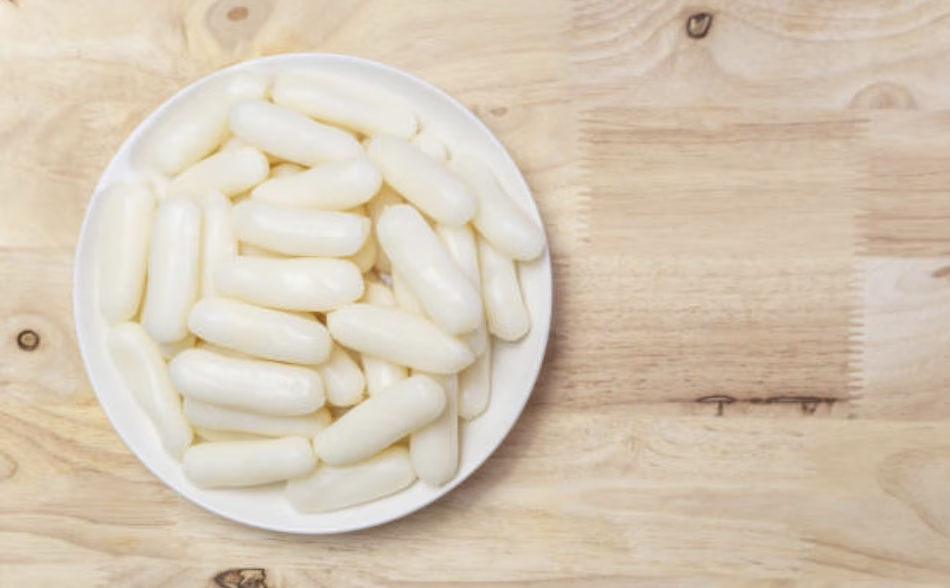
- Prepare the Rice Cakes:
- If using frozen rice cakes, soak them in warm water for 10-15 minutes to soften.
- For fresh rice cakes, rinse under cold water to remove any excess starch.
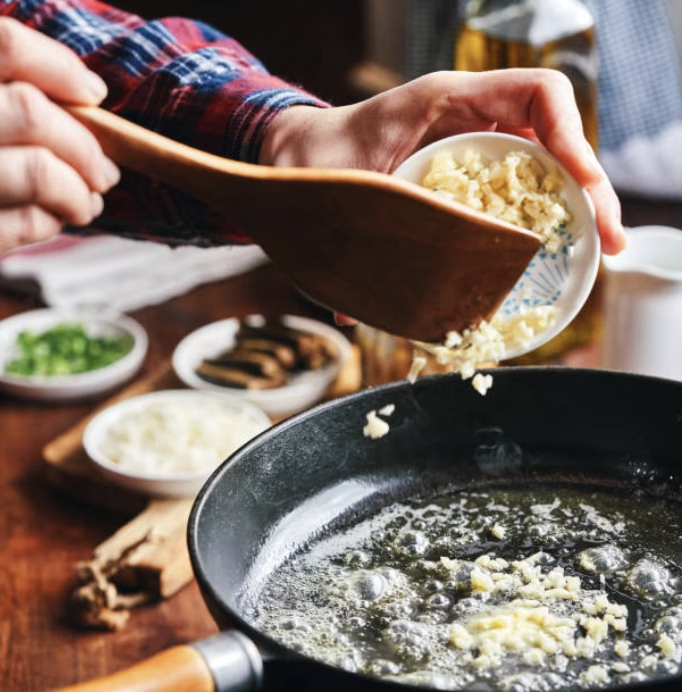
- Sauté Aromatics:
- In a large skillet or saucepan, melt butter over medium heat.
- Add minced garlic and sauté until fragrant, about 1-2 minutes.
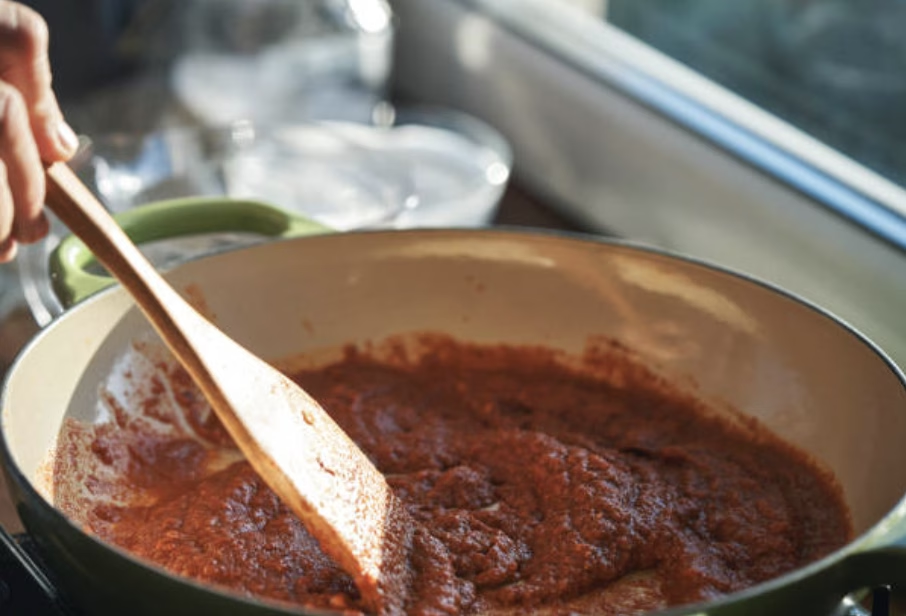
- Create the Sauce Base:
- Stir in gochujang, soy sauce, sugar, and tomato paste.
- Cook for 2-3 minutes, allowing the flavors to meld.
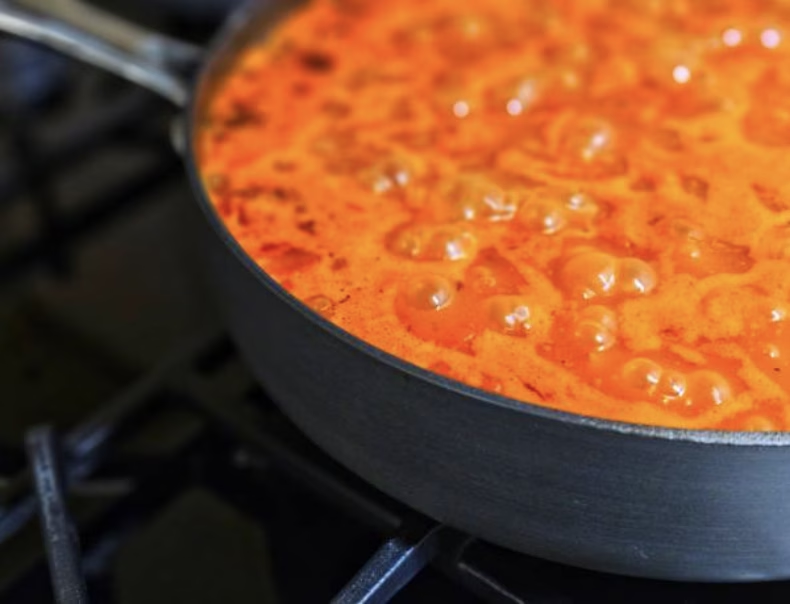
- Add Cream and Milk:
- Gradually pour in heavy cream and milk, stirring continuously to prevent curdling.
- Bring the mixture to a gentle simmer.
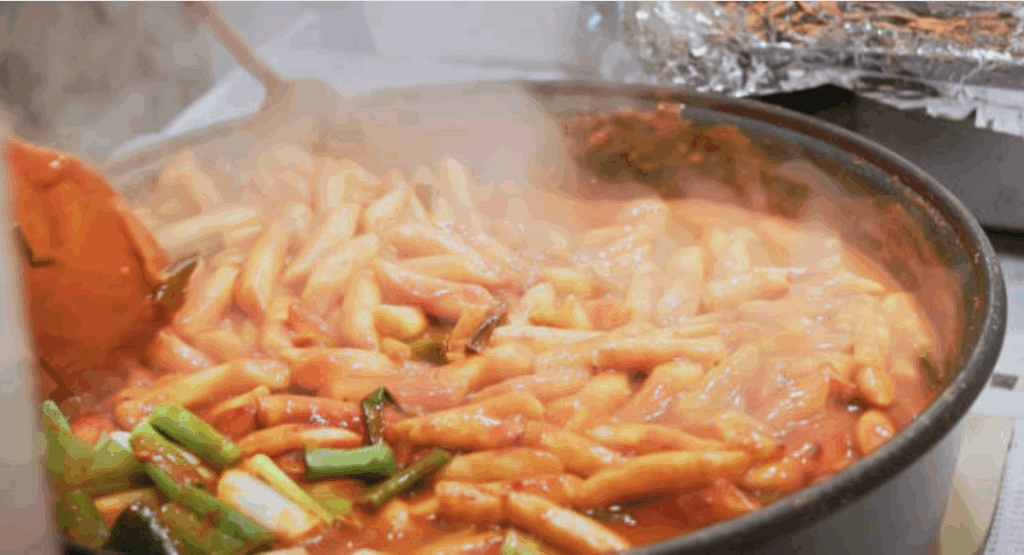
- Incorporate Rice Cakes:
- Drain the soaked rice cakes and add them to the sauce.
- Cook for 8-10 minutes, stirring occasionally, until the rice cakes are tender and the sauce has thickened.
Hack: If you don’t have gochujang, mix 2 tablespoons of sriracha with 1 tablespoon of miso paste as a substitute.
3 Flavor Twists
1. Cheesy Rose Tteokbokki
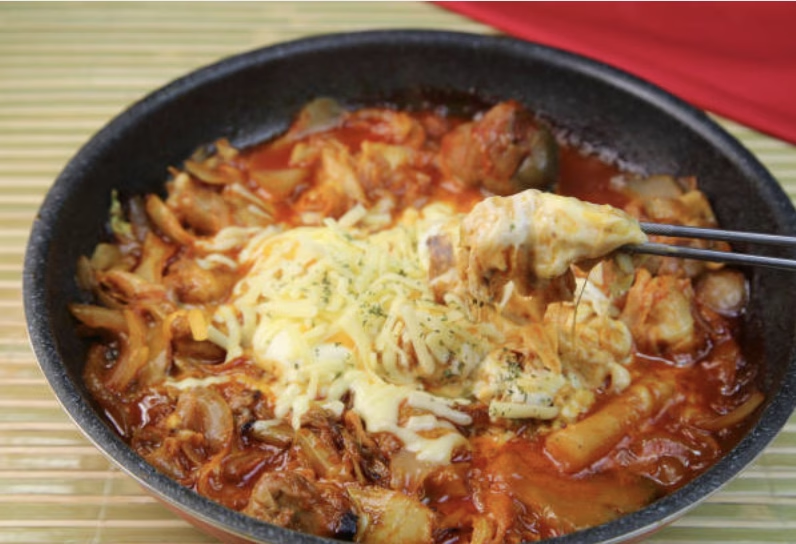
For those who love a gooey, cheese tteokbokki, this twist is for you.
Add:
- 1 cup shredded mozzarella
- ¼ cup grated Parmesan
Method:
- After preparing the rose tteokbokki, sprinkle the cheeses on top.
- Broil for 2-3 minutes until the cheese is bubbly and golden.
The melted cheese adds a comforting layer that balances the spice, making it perfect for first-timers.
2. Buldak-Style Spicy Rose Tteokbokki
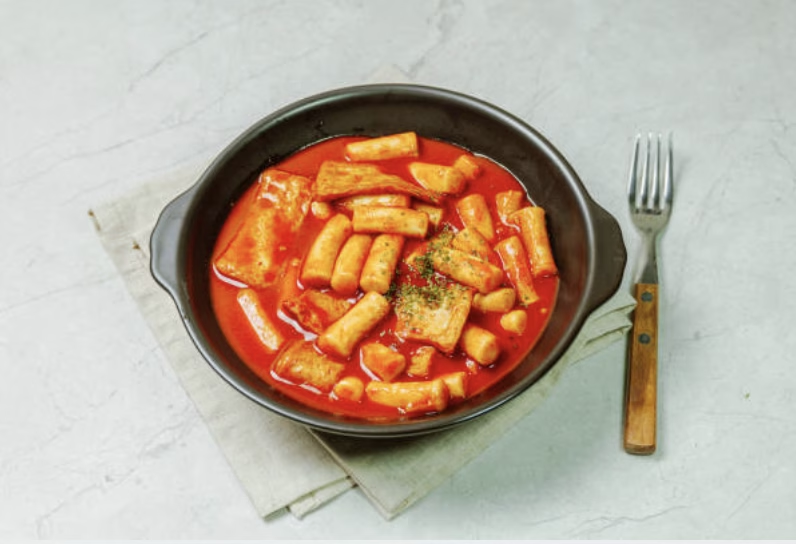
For heat enthusiasts, this fiery version of buldak tteokbokki will tantalize your taste buds.
Add:
- 1-2 tablespoons gochugaru (Korean chili flakes)
- 1 tablespoon buldak sauce (or sriracha)
Method:
- Incorporate the extra chili flakes and buldak sauce into the rose sauce during preparation.
- Top with sliced jalapeños for added crunch and heat.
Heat Hack: Serve with milk or yogurt to counterbalance the spiciness.
3. Vegan Rose Tteokbokki
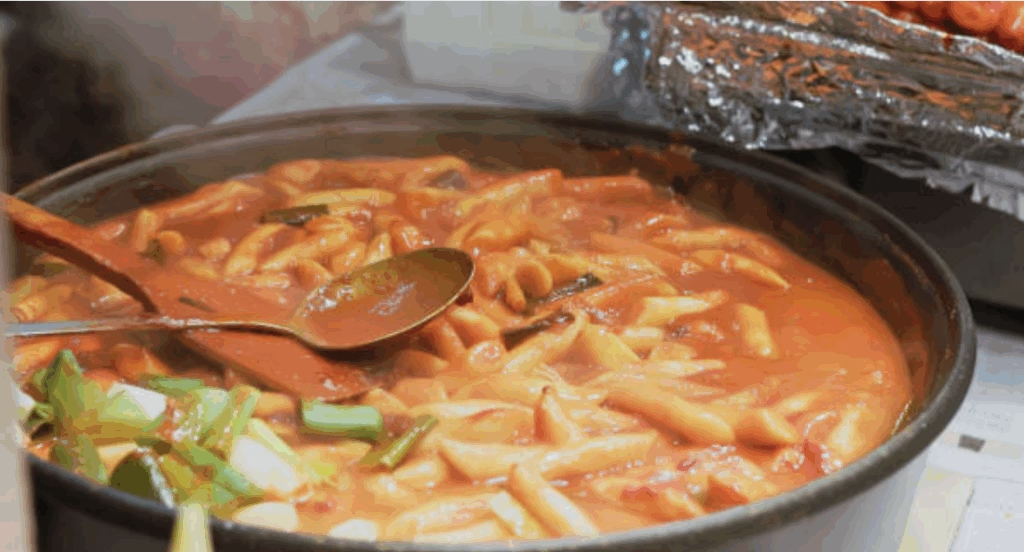
A plant-based version that doesn’t compromise on flavour of Tteokbokki Recipes.
Substitute:
- Heavy cream → Full-fat coconut milk
- Butter → Vegan butter
- Cheese → 2 tablespoons nutritional yeast
Pro Tip: Add 1 teaspoon of apple cider vinegar to mimic the tanginess of dairy.
Ingredient Substitutions: Making Tteokbokki Accessible
Adapting traditional Korean ingredients with American alternatives makes this dish more accessible:
- Rice Cakes: If unavailable, substitute with gnocchi or thick rice noodles.
- Gochujang: Mix sriracha and miso paste as a substitute.
- Fish Cakes: Use tofu or imitation crab meat.
- Korean Sausages: Replace with hot dogs or smoked sausages.
Nutritional Insights and Dietary Considerations
Understanding the nutritional aspects helps cater to various dietary needs:
- Caloric Content: Traditional tteokbokki is high in carbohydrates and calories. Using alternatives like zucchini noodles can reduce calorie intake.
- Dietary Adaptations: For gluten-free versions, ensure all sauces and ingredients are gluten-free. For low-carb diets, substitute rice cakes with vegetables like zucchini or cauliflower.
Cultural Significance and Modern Interpretations
Tteokbokki holds a special place in Korean culture as a beloved street food. The rose variation represents the fusion of Korean and Western cuisines, showcasing the adaptability and global influence of Korean dishes. This modern interpretation caters to diverse palates and dietary preferences, making it a versatile and inclusive dish.
Pairing Ideas & Pro Tips
Classic Pairings:
- Kimchi: Adds a tangy contrast.
- Steamed dumplings: Complements the chewy texture.
Modern Twists:
- Crispy tofu: Adds protein and crunch.
- Avocado slices: Provides a creamy balance.
For Parties:
- Skewer rice cakes with cocktail sausages for easy appetizers.
Pro Tips:
- Control the Heat:
- Mild: Use 1 tablespoon gochujang + ½ cup cream.
- Extra Spicy: Add 1 teaspoon cayenne pepper.
- Rice Cake Hacks:
- Soak stale rice cakes in milk overnight to revive chewiness.
- Pan-fry leftovers for crispy tteokbokki bites.
- Freshness Boost:
- Stir in baby spinach or kale during the last 2 minutes of cooking.
Frequently Asked Questions
What Is Rose Tteokbokki?
Rose Tteokbokki is a modern Korean dish that blends the traditional spicy rice cakes with a creamy sauce made from gochujang (Korean chili paste), milk, and cream. This fusion results in a rich, mildly spicy flavor that’s both comforting and indulgent.
How Can I Adjust the Spice Level?
To make the dish milder, reduce the amount of gochujang and omit additional chili flakes. For a spicier kick, increase the gochujang and add gochugaru (Korean chili flakes) to taste.
Can I Substitute Pasta for Rice Cakes?
Absolutely! If rice cakes aren’t available, you can use pasta alternatives like gnocchi or rigatoni. Gnocchi, in particular, offers a chewy texture similar to rice cakes, making it a suitable substitute in this dish.
What Are the Key Ingredients?
The essential components include Korean rice cakes, gochujang, soy sauce, sugar, heavy cream, and milk. Optional additions like fish cakes, sausages, and cheese can enhance the flavor and texture.
How Do I Store and Reheat Leftovers?
Store any leftovers in an airtight container in the refrigerator for up to three days. To reheat, place the tteokbokki in a pan over medium heat, adding a splash of milk or water to loosen the sauce, and stir until heated through.

Have additional inquiries?
We are here to help. Let’s engage in a conversation.
Final Thoughts
Creamy Rose Tteokbokki is a delightful fusion of Korean tradition and Western comfort. Its versatility allows for endless customization, catering to various dietary preferences and spice tolerances. By incorporating American ingredients, this dish becomes more accessible while still honoring its Korean roots.
We’d love to see your take on this recipe! Share your creations on Instagram and tag us @theworldspalette_. Your dish might be featured on our page!
For more delicious Korean-American fusion recipes, check out our 20-Minute Easy Tteokbokki Recipe with Gnocchi or Noodles.
Don’t forget to subscribe to our newsletter for the latest recipes and culinary tips delivered straight to your inbox. Happy cooking!
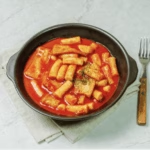
Creamy Rose Tteokbokk
Ingredients
- 2 tsp sesame oil
- ½ onion thinly sliced
- 3 garlic cloves minced
- 1½ tbsp gochujang Korean red pepper paste
- 1½ tbsp tamari or soy sauce
- 1½ tbsp sugar
- 1 tsp gochugaru Korean chili flakes, adjust to taste
- 1½ cups milk dairy or plant-based
- 1 lb Korean rice cakes tteok
- 2 sheets Korean fish cakes cut into bite-sized pieces
- 6 oz mini sausages
- 1 cup shredded mozzarella cheese
- 2 tbsp grated parmesan cheese
- Sliced green onions and sesame seeds for garnish
Instructions
- Heat sesame oil in a large skillet over medium heat. Add sliced onion and minced garlic; sauté for 3–4 minutes until softened.
- Stir in gochujang, tamari (or soy sauce), sugar, and gochugaru. Cook for 1–2 minutes until the mixture is well combined.
- Pour in the milk, stirring continuously to create a smooth, creamy sauce.
- Increase heat to medium-high. Add the rice cakes, fish cakes, and mini sausages. Once the sauce begins to boil, reduce heat to a simmer. Cook for 4–5 minutes, stirring occasionally, until rice cakes are tender.
- Lower the heat and mix in shredded mozzarella and grated parmesan cheese. Stir until the cheese melts and the sauce becomes thick and creamy.
- Remove from heat. Garnish with sliced green onions and sesame seeds. Serve hot.
Notes
- For a gluten-free version, use gluten-free gochujang and tamari.
- To make it dairy-free, substitute milk and cheese with plant-based alternatives.
- Adjust the spiciness by varying the amount of gochugaru.
- Optional additions include boiled eggs, bacon, or glass noodles.
